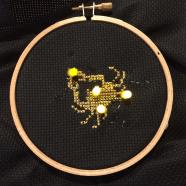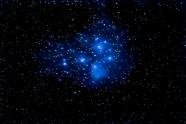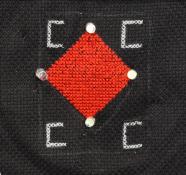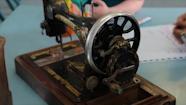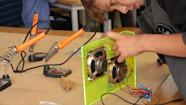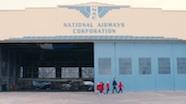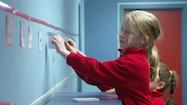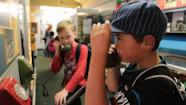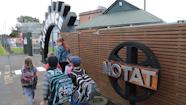Astronomy and e-textiles
Making connections between a museum display and the technology learning area
PLD facilitator, Pippa Lawlor, worked with primary and intermediate schools to build connections between an annual Matariki exhibition at Kiwi North museum and the technology learning area.
Local curriculum
Kiwi North in Whangarei celebrates Matariki with an exhibition that makes connections to local iwi, drawing on museum taonga. Each year the Matariki exhibition has a different theme or focus and the themes generally link back to navigation.
Past themes have included the long fin eel and eel migration and navigation, and raranga and the woven taonga the museum held.
Finding inspiration for school projects
Pippa watched a QI (Quite interesting) BBC television programme on naval navigation where panel members explored navigation charts used in the Pacific Islands. Examples of these are the meddo or rebbelib maps made in the Marshall island from sticks, shells, and stones.
Further information on the maps is given in this video – Navigation Chart, Marshall Islands.
Or see the Technology Online page on Tupaia: Master Navigator, a School Journal article, for more information and resources on navigation.
The navigation charts raised the possibility of students creating a textiles outcome that depicted an aspect of astronomy that is of interest to them. Textile teachers have a growing interest in e-textiles and this project provided an opportunity to embed e-textiles skills into a programme of learning.
Research in local schools showed that students’ hand skills for construction in textiles were very limited. This was a chance to develop these as well.
Two schools picked up on this idea. Students created a piece of hand embroidery that included an electronic system with LED lights to depict the stars.
Tātai Arorangi/Astronomy theme
Following on from this work, Pippa supported Tuakau College to implement this project in their year 9 textiles class.
The college has been trialling cross curricular themes with their year 9 students. The aim of this approach is to provide a more cohesive programme of learning and encourage students to see connections in their learning across learning areas within The New Zealand Curriculum.
The school-wide focus was on sustainability and responsibility.
The purpose of this particular year 9 thematic project was for students to:
- understand their place in the universe and how the universe has shaped societies
- explore different roles and responsibilities they have to protect the planet.
Other learning areas took a different slant on this theme. For example, social science focused on civilisation, migration, and navigation. In mathematics the students investigated a planet and presented their findings about area, volume, and size. They then made a 3D model of their chosen planet using either papier-mâché or a computerised model.
The task
Tuakau College textiles teacher, Melanie Devaney, gave her class the following task:
Brief
Star constellations can be hard to see due to light pollution levels. Choose a star constellation either with cultural links that are important to you, or your own star sign and create a cross stitch panel with LED lights attached to mimic the light.
The panels will be exhibited in the iHub at school. Others (in the school and wider community) will view the constellations to raise awareness of the issue of light pollution. The purpose of the exhibition is also for our community to understand the content of the year 9 Tātai Arorangi – Astronomy programmes across the different learning areas in The New Zealand Curriculum.
Teacher given specifications for your product
The requirements for the embroidery panel are:
- the design reflects a star constellation or star sign image
- it is constructed from black aida fabric, embroidery thread, and a LED circuit
- Quality standards for the product are:
- the aida fabric is cut accurately to fit the embroidery hoop
- the embroidery thread ends are securely anchored
- the circuit is sewn correctly and all LEDs function
- the surface decoration is securely fastened (embroidery and LEDs)
- the panel will be displayed in the iHub as part of the year 9 Tātai Arorangi – Astronomy exhibition
- the outcome is aesthetically pleasing to the visitors to the iHub
 Introducing the task
Introducing the task

Light pollution
Melanie introduced the project by showing the students a video clip on light pollution:
Lost in Light - a short film on Light Pollution
Many of the students were aware of air, land, and water pollution but did not know that light can also be a pollutant. This gave opportunities for discussions linking to the indicators of progression at level 3 for the characteristics of technology component.
In particular, students can describe examples of how:
- technology has impacted on the social world over time
- technology has impacted on the natural world over time.
Choosing a star or constellation
The students were given access to Stellarium and asked to identify a star constellation or star sign image that had meaning for them.
Stellarium is a free, open-source planetarium for computers. It shows a realistic sky in 3D and allows users to go back in time and select a date and position to view the stars in the night sky. For example, the programme allows users to view the night sky on the day the Waitangi Treaty settlement was signed.
Students were already very aware of Matariki. As part of the introduction to the year 9 theme, the te reo teacher outlined and discussed the meaning of Matariki to Māori and its associated constellations.
Skill development
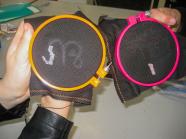
This project is an opportunity to develop textile skills. In particular, students learnt hand sewing and embroidery skills as well as how to embed electronic circuits in textile products.
The students were taught how to:
- create a design of a star constellation for aida embroidery fabric using graph paper that would be stitched out using cross stitch
- cross stitch by hand using embroidery thread
- create a circuit diagram to plan out how the LED lights would fit in the design
- set up the electronic circuit using a cell holder, LED lights, and conductive thread in the piece of embroidery
- create a framing system to display their e-textile outcome.
Melanie also had a sample panel to show students. Students found learning new skills in embroidery and building a successful electronic circuit challenging, however they were very excited by their success.
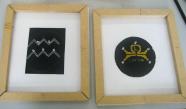
“The students were very engaged and the project took on a momentum of its own. Two of the students took over the creation of the frames for the panels. They met with the workshop teacher to design and make these.”
Melanie Devaney, year 9 teacher at Tuakau College
Other curriculum links
This project is also an opportunity for students to contribute to developing understandings of the technology learning area. In particular:
Technological products (level 3)
Students can:
- describe the properties of materials used in particular products that can be measured objectively
- describe the properties of materials used in particular products that can be measured subjectively
- describe how the properties combine to ensure the materials allow the product to be technically feasible and socially acceptable.
Technological systems (level 1 and 2)
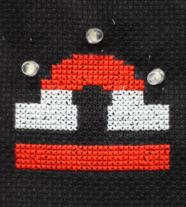
Students can:
- identify the components of a technological system and how they are connected
- identify the input/s and output/s of particular technological systems
- identify that a system transforms an input to an output
- describe the change that has occurred to the input to produce the output in simple technological systems
- identify the role each component has in allowing the inputs to be transformed into outputs within simple technological systems.
Progress outcome 1 for designing and developing digital outcomes
In authentic contexts and taking account of end-users, students participate in teacher-led activities to develop, manipulate, store, retrieve, and share digital content in order to meet technological challenges. In doing so, they identify digital devices and their purposes and understand that humans make them. They know how to use some applications, they can identify the inputs and outputs of a system, and they understand that digital devices store content which can be retrieved later.
Outcomes
The panels are now on display in the iHub and enjoyed by the students and the wider school community.
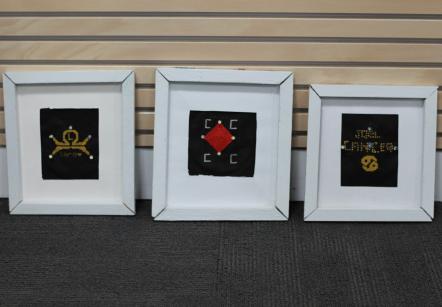
Related videos
Hooking primary students into technology (02:34)
Diana Comp shares some of her strategies for engaging primary students and growing understandings in technology.
Technology and science work well together (04:39)
Steve Jeffares and Ronnie McHale share how their students deepen conceptual understandings through integrating multiple knowledge bases.
Technology and literacy in years 3–4: Flight inquiry (04:56)
Andrea Robertson describes the richness of their "amazing flight inquiry" – incorporating EOTC and learning in technology, literacy, and numeracy. ...
Technology, mathematics, and science in years 3–4: Flight inquiry (03.38)
Andrea Robertson and Lisa Hocking share how mathematics and science were incorporated into their technology learning.
Technological experiences (02.27)
Cheryl Pym describes the power of providing authentic experiences to engage students.
Technological experiences at Motat (03:06)
Moira Patterson and Naomi Laycock show the importance of engaging students in hands-on experiences.

